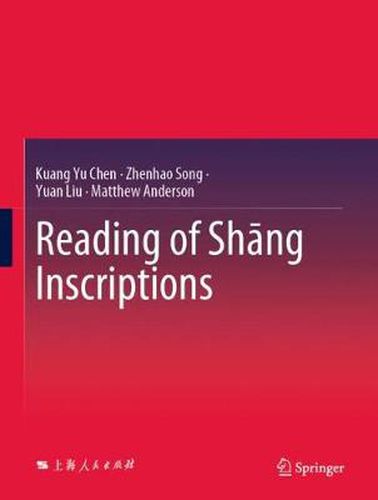Readings Newsletter
Become a Readings Member to make your shopping experience even easier.
Sign in or sign up for free!
You’re not far away from qualifying for FREE standard shipping within Australia
You’ve qualified for FREE standard shipping within Australia
The cart is loading…






This book introduces readers to oracle bone inscriptions (OBI), the oldest known form of Chinese writing. It presents 120 rubbings made from unearthed animal bones and turtle shells that the Shang royal court employed to record royal divinations 3500 years ago, covering topics ranging from ancestor worship, rituals, and astronomy to agriculture, war, and hunting. Each rubbing is accompanied by a graph-to-graph transcription, a translation and a detailed annotation. The book is intended for both general readers and scholars who are interested in ancient civilizations and Early China in particular, acquainting them not only with OBI graphs and the development of the Chinese writing system, but also the history of the Shang Dynasty. The didactic and tutorial format makes this book ideal for teaching and for self-learning.
Sumerian, Egyptian, Chinese OBI and Mayan constitute the four pristine writing systems. Of these, only Chinese writing has remained logographic and survived to the present day. The study of OBI not only plays a pivotal role in connecting archaeology to history, but is also of great importance to the comparative study of the origin of writing and civilization. Though there are numerous books on Mayan and Egyptian hieroglyphs, there are very few on OBI; this book fills that gap.
$9.00 standard shipping within Australia
FREE standard shipping within Australia for orders over $100.00
Express & International shipping calculated at checkout
This book introduces readers to oracle bone inscriptions (OBI), the oldest known form of Chinese writing. It presents 120 rubbings made from unearthed animal bones and turtle shells that the Shang royal court employed to record royal divinations 3500 years ago, covering topics ranging from ancestor worship, rituals, and astronomy to agriculture, war, and hunting. Each rubbing is accompanied by a graph-to-graph transcription, a translation and a detailed annotation. The book is intended for both general readers and scholars who are interested in ancient civilizations and Early China in particular, acquainting them not only with OBI graphs and the development of the Chinese writing system, but also the history of the Shang Dynasty. The didactic and tutorial format makes this book ideal for teaching and for self-learning.
Sumerian, Egyptian, Chinese OBI and Mayan constitute the four pristine writing systems. Of these, only Chinese writing has remained logographic and survived to the present day. The study of OBI not only plays a pivotal role in connecting archaeology to history, but is also of great importance to the comparative study of the origin of writing and civilization. Though there are numerous books on Mayan and Egyptian hieroglyphs, there are very few on OBI; this book fills that gap.